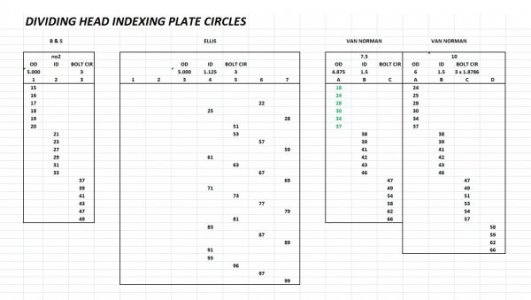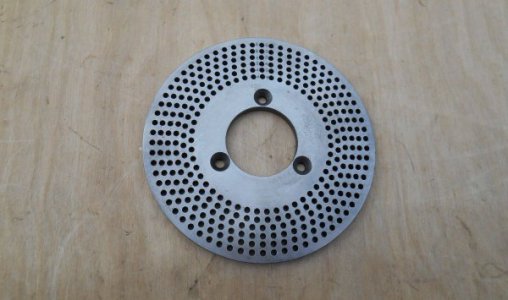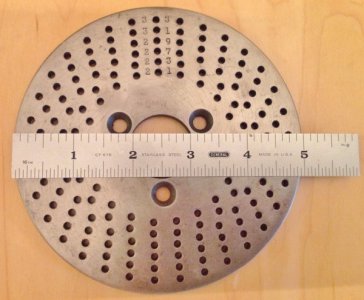...
This is a case where the tool can improve the accuracy of its self.
That depends. If the holes are all placed independently, then that's correct. If, otoh, there's any cumulative error in the holes, then you don't get any improvement.
Say the holes are consistently out of place by 0.01°. For a distance of 40 holes, that accumulates to 0.40°, and then you gear that down by 40:1, and you're back where you started with 0.01° error.
That's why you can't just do to same approximation over and over again and make the plates more accurate. An approximation in the dividing ratio creates a consistent error, which simply replicates itself on each iteration. Otherwise I could use a 40 hole circle as an approximation to a 39 hole circle, and it would magically transform itself into a 39 hole circle after multiple replications.
You do get the 40:1 improvement when going from a cnc plate, but that's a one time deal, and it doesn't work if, for example, the plate was cnc'ed in incremental polar mode, where the error accumulates from one hole to the next.
Sent from my Pixel XL using Tapatalk



